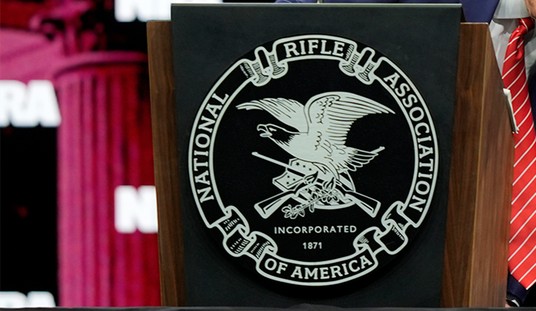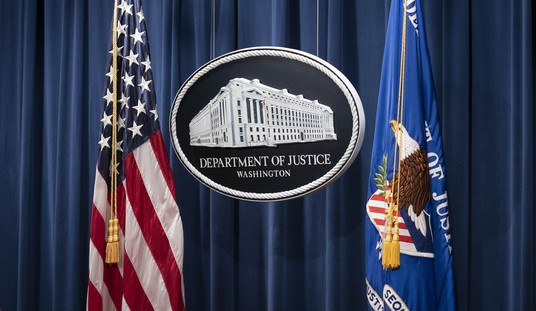24 hours after a Somali Muslim refugee carried out a terrorist attack against his fellow students at Ohio State University, we’re getting a much clearer picture of how exactly the attack went down, and how quickly an Ohio State University police officer who just happened to be in the area at the right time put the terrorist down.
An Ohio State police officer was being hailed a hero for his quick reaction after killing a man a minute after he drove his car into a crowd and then stabbed multiple people Monday.
Officer A___ H____*, who had only joined the department in January 2015, was responding to reports of a nearby gas leak when the suspect jumped a curb on campus at around 9:52 a.m.
H____ ordered the attacker, later identified as Abdul Razak Ali Artan, to drop the butcher’s knife and then shot him when he didn’t obey the command, university president Michael Drake said.
“The officer encountered the individual by 9:53 — the subject was neutralized by 9:53,” Drake said, underscoring how quickly events unfolded.
Director of Ohio State’s Department of Public Safety Monica Moll echoed Drake’s sentiments, saying H____ is owed a debt of gratitude.
“He did a fabulous job today,” she said.
University police Chief Craig Stone said it was fortunate H____ had gone to investigate the gas leak at the same time the attack was unfolding. It helped him respond quickly to the attacker.
According to numerous accounts, Artan’s plan involved running over as many students as possible with his car, then leaping out to stab/slash any available targets of opportunity with a butcher knife.
He apparently managed to hit three students before leaping out of his car. It’s not readily apparent yet if he wrecked/disabled his vehicle, or simply abandoned it as being inefficient under the circumstances.

Once Artan jumped from the vehicle, witnesses say he lacked any focus, and ran from one person to the next attacking them, but not (thankfully) with any degree of skill. Officer H____ happened to be there only because he was was checking a gas leak, saw the attack take place, and closed the distance to Artan within seconds. He ordered Artan to drop the knife, and when Artan failed to do so, he dropped him.

It was then that students in nearby buildings who had been oblivious to the nearly silent car and knife attack that unfolded in seconds heard what students report was 3-4 gun shots. After those shots were reported in numerous panicked 911 calls, OSU’s alert system quickly sent out an erroneous “active shooter” campus alert, unaware that the shots they heard was a threat being ended, not one beginning.
The attack, fortunately, was a perfect storm of good luck.
- “Lone wolf” refugee Muslim terrorist Artan chose a poor time and place for his attack.
- Artan was both a poor driver, and clearly unskilled with edged weapons.
- Officer H____ just happened to be at the scene responding to a reported gas leak.
- Officer H____ belongs to an OSU police force that is very well trained according experts I trust, and Officer H___ competently ended the threat with minimal rounds fired, and delivered accurately.
But what if Officer H____ had not been previously called to check out that gas leak? To put it mildly, things would get very interesting in a very bad way, very fast.
Why?
You have to figure on a 5-10 minute response time to even the most severe incidents once you factor in the amount of time it takes for someone to recognize a threat, make the 911 call, relay good information to a dispatcher, for the dispatcher to call first responders, and for first responders to transit from their present location to the scene and engage.
At Virginia Tech, the killer opened fire at 9:40. The first 911 call didn’t get made until two minutes after the attack began. Police did not arrive at the scene until five minutes after the attack began, and didn’t gain entry into the building until 9:50. At Sandy Hook Elementary School the shooter was dead for five minutes before police entered the building, ten minutes after the first 911 call was made, and 14 minutes after the shooting started.
If Officer H____ was not right there, the casualties would likely have been doubled, and some of them would have probably been fatal.
If one of the students, faculty, or staff on-scene was a lawful concealed carrier, however, the attack might have been ended as quickly or almost as quickly as it was by Officer H____. A knife-armed attacker—especially one fixated on someone else—is a fairly easy target, and if Artan has been dumb enough to advance directly on a concealed carrier, odds are that even a concealed carrier of average competence would have likely put multiple rounds center mass, ruining his day and ending his ability to continue his attack.
We can’t count on luck being there to save our students, folks. Counterterrorism experts, and mass attack researchers at the Homeland Security Institute, and defensive firearms instructors with military and police backgrounds hold a consensus opinion that concealed carry saves lives, and that “gun free zones” are the preferred targets of both mass murderers and terrorists. Campus carry exists in many states already, and there have been no major issues (and certainly no homicides) as a result of lawful campus carry.
It’s time for campus carry to become the norm, nationwide.
* I don’t think it is responsible to print the names of police officers who have killed terrorists. While we have not had reprisal attacks against police officers or counterterrorists in the United States, they have taken place in other parts of the world.








Join the conversation as a VIP Member